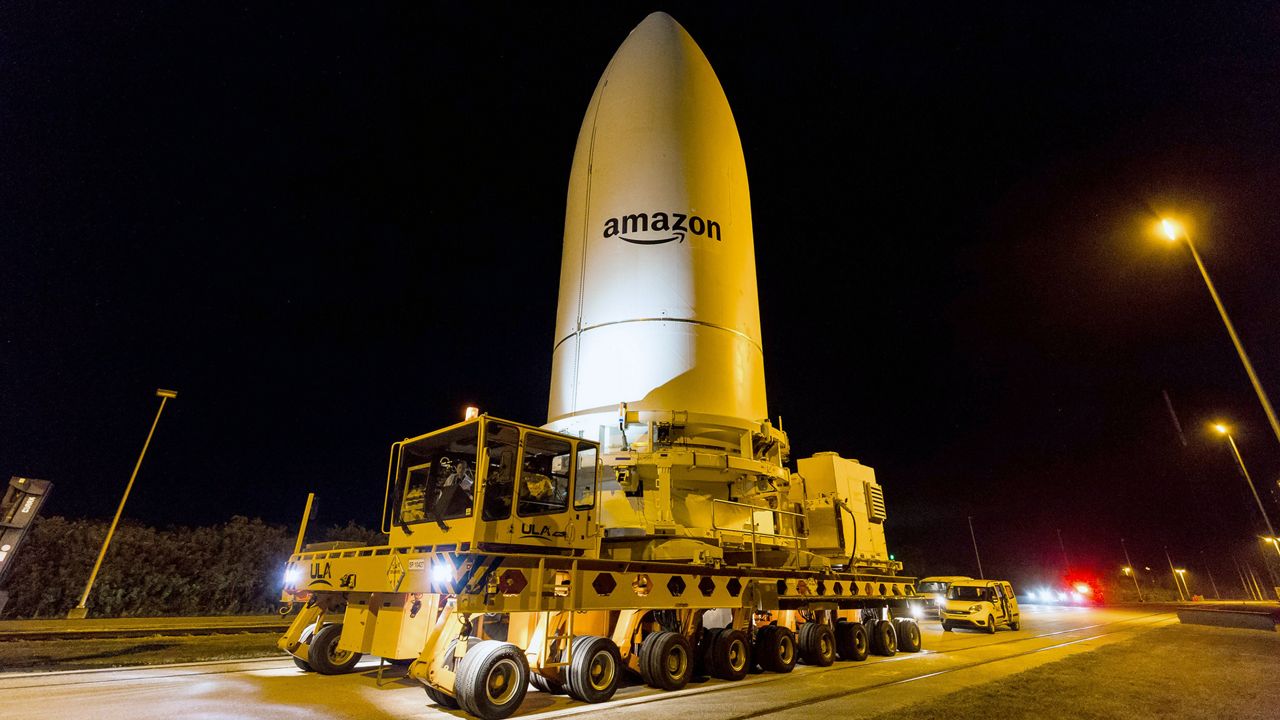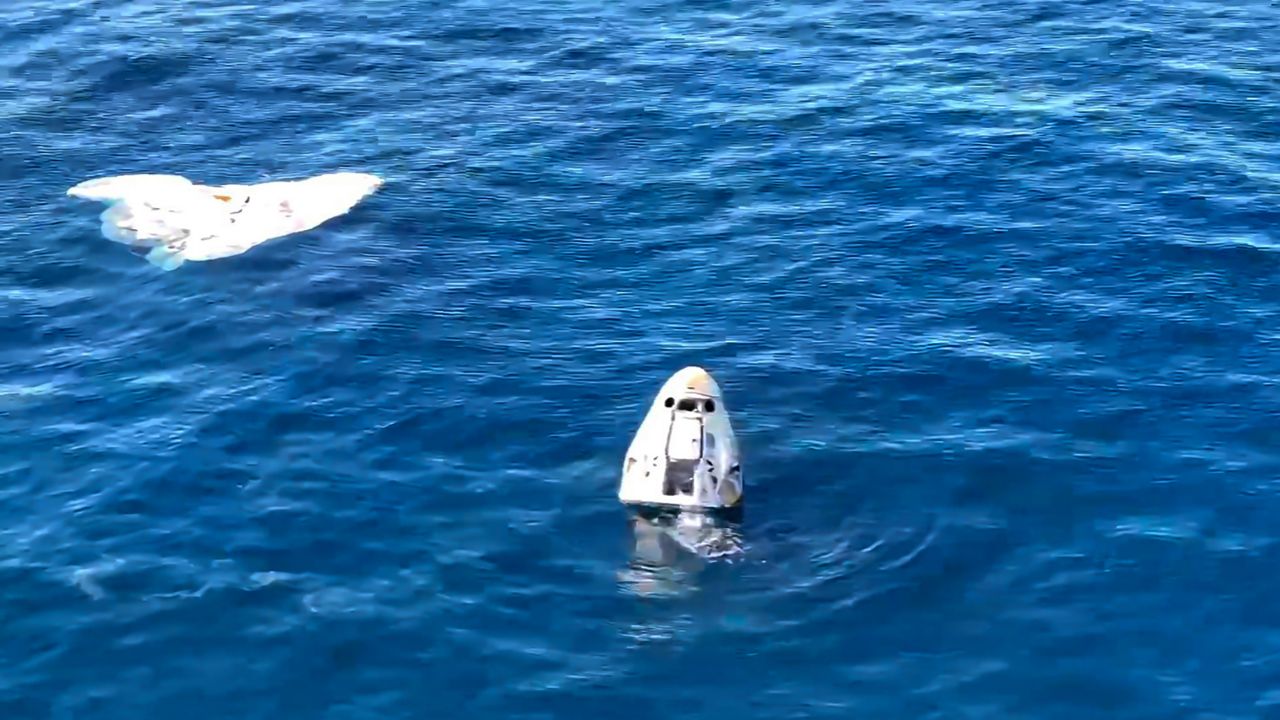CAPE CANAVERAL, Fla. — The second launch of the Falcon Heavy, SpaceX's biggest operational rocket, has been pushed back a day.
- Upper-level wind shear forces delay of Falcon Heavy launch
- SpaceX to launch 13,000-pound communications satellite
- Company will try to land, recover all 3 rocket boosters
- Get more space coverage here
- SEE BELOW: Watch the launch live — targeting 8 p.m. ET liftoff ▼
The 230-foot-tall Falcon Heavy was raised vertical Wednesday at Kennedy Space Center's Pad 39A, prepping for liftoff.
SpaceX originally set the window to open at 6:35 p.m. Eastern Time but pushed the launch back twice because of concerns about upper-level wind shear. Just before 7:30 p.m., SpaceX announced it was standing down for a Wednesday launch.
The company will try again Thursday, also at 6:35 p.m. ET.
SpaceX's second Falcon Heavy rocket is carrying a satellite the size of a bus: the Arabsat 6A satellite is a whopping 13,000 pounds.
A satellite about the size of a bus is set to launch on a #FalconHeavy rocket tonight. I’ll tell you why @SpaceX is warning people in Central Florida not to be worried if they hear something alarming during the launch. @MyNews13 @BN9 pic.twitter.com/s8qS7cIZ6b
— Jerry Hume (@JerryHume) April 10, 2019
"The satellite is so big, that no other rocket could take it," said Chris Pettigrew with Lockheed Martin, which built the satellite for the company Arabsat. Based in Saudi Arabia, the company wants to increase communications coverage in the Middle East and Africa.
"It's going to provide high-speed internet, broadband communications, mobile telephones," Pettigrew said. "It's a region that's growing a lot right now, so they really need that extra capacity."
Since the first flight of the Falcon Heavy in February 2018, SpaceX has made some upgrades to its boosters, resulting in 10 percent more thrust, the company says. That is 5 million pounds of thrust at liftoff.
Shortly after launch, SpaceX will attempt to recover all three boosters. The middle one, the main booster core, will target the drone ship in the Atlantic Ocean. The other two will land simultaneously at Landing Zones 1 and 2 at Cape Canaveral Air Force Station, a short distance from where it launched.
Last year, during the test flight, the main booster core crashed into the ocean and damaged the drone ship.
SpaceX will attempt to land Falcon Heavy’s side boosters at Landing Zones 1 and 2 and Falcon Heavy’s center core on the Of Course I Still Love You droneship during the Arabsat-6A mission → https://t.co/gtC39uBC7z pic.twitter.com/0vHnyYt0nN
— SpaceX (@SpaceX) April 9, 2019
SpaceX is warning people in Central Florida that they may hear a sonic boom or two during those landing attempts.
Thousands were at the Space Coast to watch the launch. NASA and Port Canaveral were warning motorists about road and parking restrictions and urged them to plan ahead if you want to catch the launch. Playalinda Beach and Jetty Park were filled to capacity and closed Wednesday afternoon.









